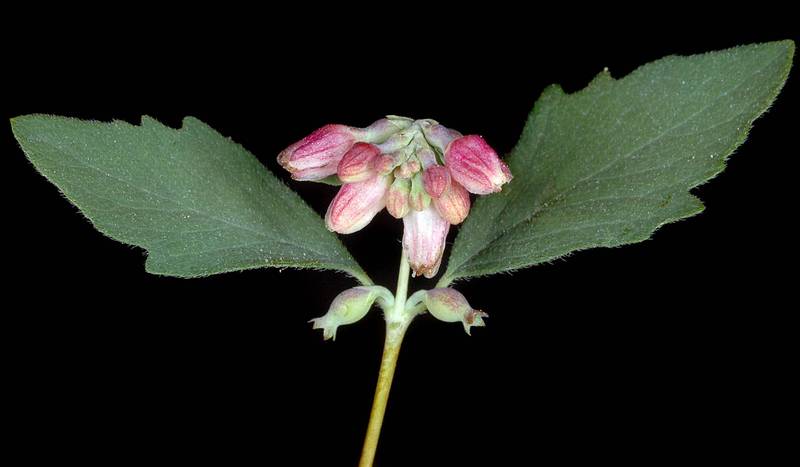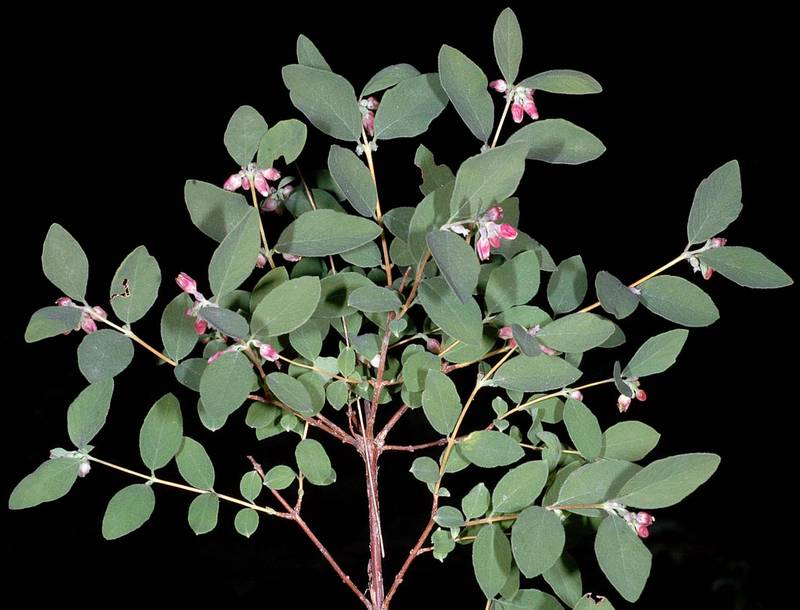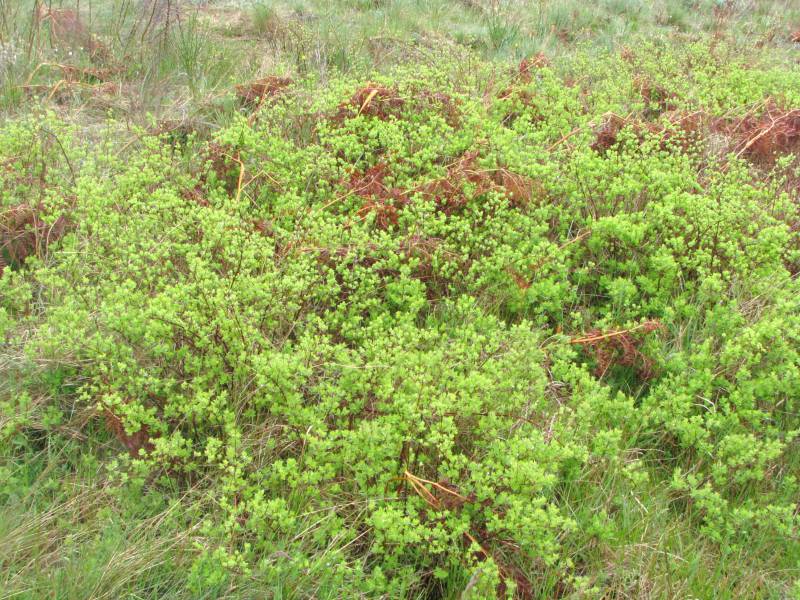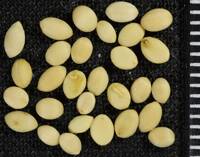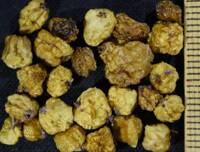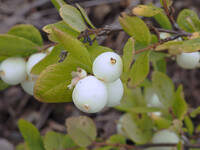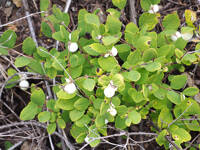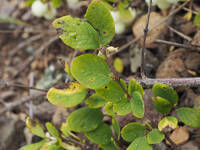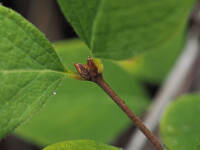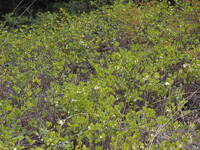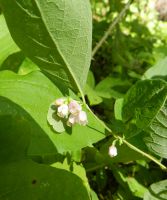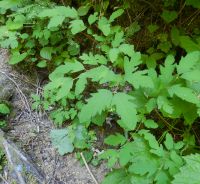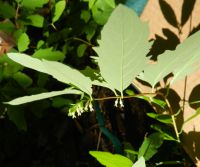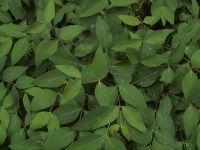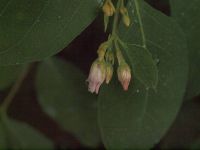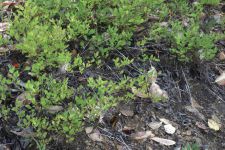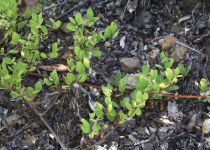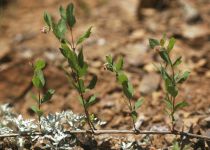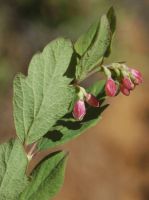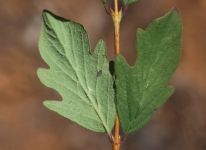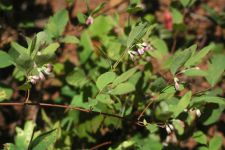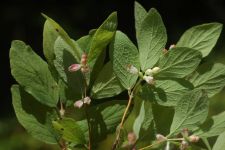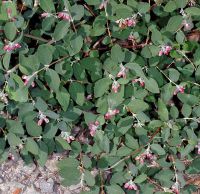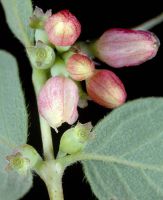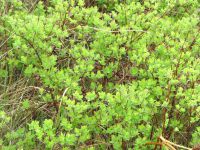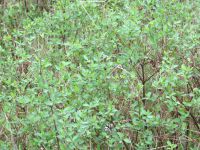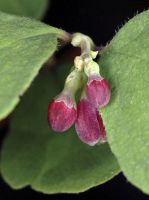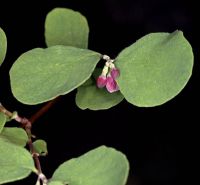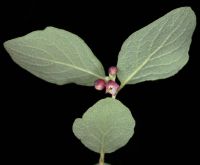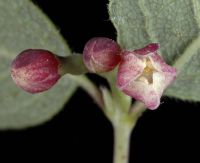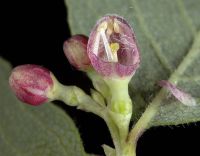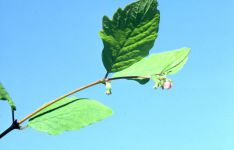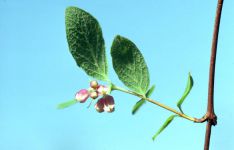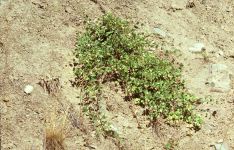Distribution: Occurring on both sides of the Cascades crest in Washington; British Columbia to California, east to Nevada, disjunct in north-central Idaho.
Habitat: Slopes and forest edge, often where wet, from low to middle elevations.
Flowers: May-July
Origin: Native
Growth Duration: Perennial
Conservation Status: Not of concern
Pollination: Bumblebees, bees, moths, wasps
Deciduous, trailing shrub 1-3 m. long, often rooting at the nodes, the branches rising less than 0.5 m.; young twigs usually puberulent.
Leaves opposite, elliptic or sometimes ovate, 1-3 cm. long and 5-20 mm. wide, entire, or with a few coarse teeth or shallow lobes, glabrous above and puberulent below.
Inflorescence a short, dense, terminal, few-flowered raceme, sometimes also in the upper axils; corolla pink, bell-shaped, 3-5 mm. long and wide, the 5 lobes equaling the tube, long-hairy within at the base of the lobes; stamens 5, anthers a little shorter than the filaments; styles glabrous, 2-3 mm. long.
: Fruit berry-like, sub-globose, 5-6 mm. long.
Publication: Fl. N. Amer. 2(1): 4. 1841.
-
var. hesperius – creeping snowberry, spreading snowberry
 Occurring on both sides of the Cascades crest in Washington; British Columbia to California, disjunct in north-central Idaho
Occurring on both sides of the Cascades crest in Washington; British Columbia to California, disjunct in north-central Idaho
PNW Herbaria: Specimen records of Symphoricarpos mollis in the Consortium of Pacific Northwest Herbaria database
WA Flora Checklist: Symphoricarpos mollis checklist entry
OregonFlora: Symphoricarpos mollis information
E-Flora BC: Symphoricarpos mollis atlas page
CalPhotos: Symphoricarpos mollis photos

